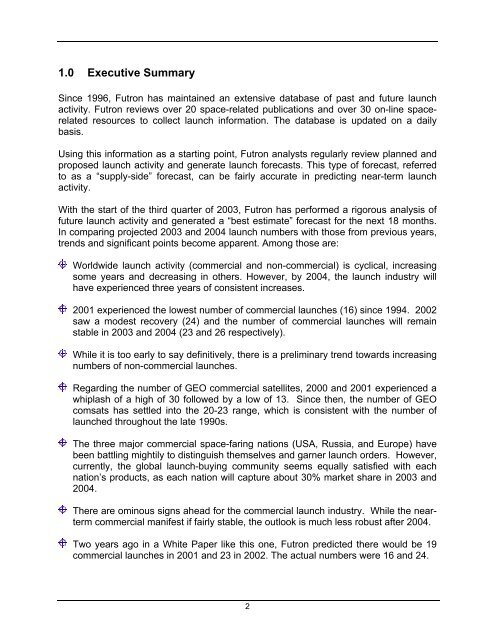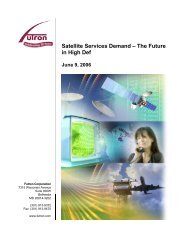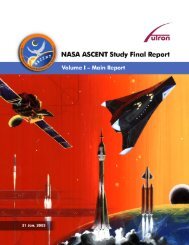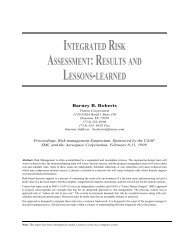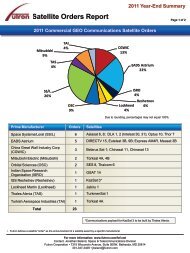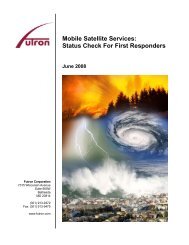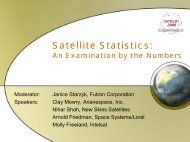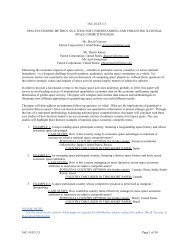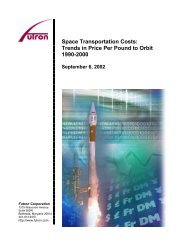1.0Executive Summary - Futron Corporation
1.0Executive Summary - Futron Corporation
1.0Executive Summary - Futron Corporation
You also want an ePaper? Increase the reach of your titles
YUMPU automatically turns print PDFs into web optimized ePapers that Google loves.
1.0 Executive <strong>Summary</strong><br />
Since 1996, <strong>Futron</strong> has maintained an extensive database of past and future launch<br />
activity. <strong>Futron</strong> reviews over 20 space-related publications and over 30 on-line spacerelated<br />
resources to collect launch information. The database is updated on a daily<br />
basis.<br />
Using this information as a starting point, <strong>Futron</strong> analysts regularly review planned and<br />
proposed launch activity and generate launch forecasts. This type of forecast, referred<br />
to as a “supply-side” forecast, can be fairly accurate in predicting near-term launch<br />
activity.<br />
With the start of the third quarter of 2003, <strong>Futron</strong> has performed a rigorous analysis of<br />
future launch activity and generated a “best estimate” forecast for the next 18 months.<br />
In comparing projected 2003 and 2004 launch numbers with those from previous years,<br />
trends and significant points become apparent. Among those are:<br />
Worldwide launch activity (commercial and non-commercial) is cyclical, increasing<br />
some years and decreasing in others. However, by 2004, the launch industry will<br />
have experienced three years of consistent increases.<br />
2001 experienced the lowest number of commercial launches (16) since 1994. 2002<br />
saw a modest recovery (24) and the number of commercial launches will remain<br />
stable in 2003 and 2004 (23 and 26 respectively).<br />
While it is too early to say definitively, there is a preliminary trend towards increasing<br />
numbers of non-commercial launches.<br />
Regarding the number of GEO commercial satellites, 2000 and 2001 experienced a<br />
whiplash of a high of 30 followed by a low of 13. Since then, the number of GEO<br />
comsats has settled into the 20-23 range, which is consistent with the number of<br />
launched throughout the late 1990s.<br />
The three major commercial space-faring nations (USA, Russia, and Europe) have<br />
been battling mightily to distinguish themselves and garner launch orders. However,<br />
currently, the global launch-buying community seems equally satisfied with each<br />
nation’s products, as each nation will capture about 30% market share in 2003 and<br />
2004.<br />
There are ominous signs ahead for the commercial launch industry. While the nearterm<br />
commercial manifest if fairly stable, the outlook is much less robust after 2004.<br />
Two years ago in a White Paper like this one, <strong>Futron</strong> predicted there would be 19<br />
commercial launches in 2001 and 23 in 2002. The actual numbers were 16 and 24.<br />
2


